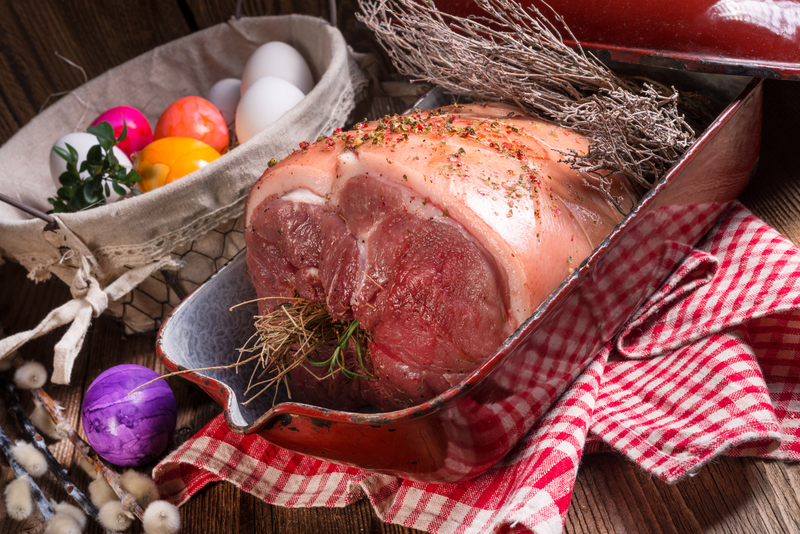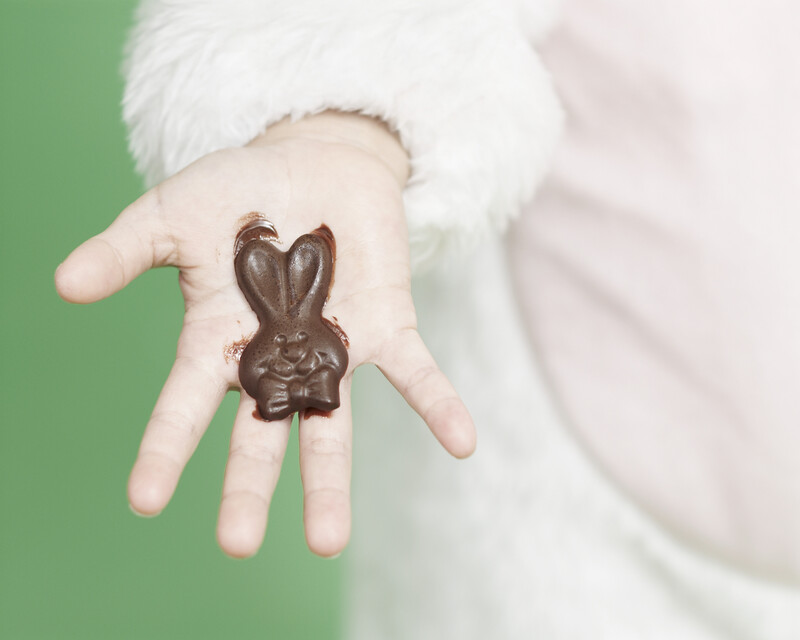Your Guide to Erasing Burnt-on Stovetop Residue
Posted on 26/05/2025
Your Guide to Erasing Burnt-on Stovetop Residue
Have burnt-on stovetop residue taken away your kitchen's shine? You're not alone! Everyday cooking can leave your stove looking less than sparkling over time, especially when sauces bubble over or food accidentally sticks to the surface. Whether you're dealing with a glass, ceramic, or metal cooktop, understanding how to remove burnt-on stovetop residue is essential for maintaining a spotless, efficient kitchen. In this comprehensive guide, we'll walk you through proven methods, preventative strategies, and insider tips to keep your stovetop looking brand new.

Understanding Burnt-on Stovetop Residue
Before diving into cleaning methods, it helps to understand what burnt-on residue is. During cooking, spills and splatters of oil, sauces, and liquids can bake onto your stove's hot surface. If not cleaned promptly, these residues can become stubborn, requiring extra effort to erase. Over time, burnt-on food and grease can not only become unsightly but also affect your stove's efficiency and even produce unpleasant odors.
Types of Stovetops and Residue Issues
- Glass and Ceramic Stovetops: These are sleek and modern but prone to visible scorch marks and crusty food stains.
- Gas Stovetops: Commonly have removable grates and burners but food debris can get stuck in hard-to-reach places.
- Electric Coil Stovetops: Can accumulate residue beneath the coils, often becoming a hidden source of grime.
Why Prompt Cleaning Matters
Allowing burnt-on residue to linger not only impacts your kitchen's appearance but can also:
- Reduce stove performance: Burnt-on food can create uneven heating.
- Produce unpleasant smells: Persistent residue emits odors, especially when reheated.
- Shorten appliance lifespan: Persistent grime can interfere with stove components.
- Present fire hazards: Built-up grease is a fire risk.
Essential Tools and Materials for Cleaning Burnt Stove Residue
Gathering the right supplies can make removing burnt-on gunk from your stove much easier. Here's what you'll need:
- Non-abrasive sponges or microfiber cloths
- Baking soda (bicarbonate of soda)
- White vinegar
- Dish soap
- Plastic or silicone scraper
- Razor blade scraper (for glass and ceramic surfaces only)
- Commercial cooktop cleaner (optional)
- Clean water in a spray bottle
- Old toothbrush
- Dry towels
- Lemon juice (for extra degreasing power)
- Rubber gloves
Step-by-Step Methods to Erase Burnt-on Stovetop Residue
Let's look at several proven techniques for removing burnt-on gunk from your stove. Always check your appliance manual first, as some surfaces require specific cleaners or methods to maintain their warranty.
1. Daily Wipe-Down for Prevention
Prevention is the best medicine. Make it a habit to wipe your cooktop after each use. For light spills and stains, simply use a damp microfiber cloth with a drop of dish soap and wipe the surface clean. Dry with a towel to avoid streaks.
2. The Baking Soda and Vinegar Method
This is a classic, natural way to erase burnt-on stovetop residue that works well for most surface types:
- Sprinkle baking soda directly on the affected areas.
- Spray or pour a small amount of white vinegar over the baking soda. It will fizz as it reacts--this helps lift residue.
- Let it sit for 15-30 minutes.
- Gently scrub with a non-abrasive sponge or microfiber cloth. For stubborn spots, use a plastic scraper.
- Wipe with a clean, damp cloth and dry thoroughly.
3. Lemon Juice for Tough Grease
Lemon juice is a natural degreaser and deodorizer. Squeeze fresh lemon juice on the burnt residue, let it sit for about 10 minutes, and wipe off with a wet sponge. For stuck-on messes, combine lemon juice with baking soda for a powerful paste.
4. The Soak and Scrape Technique for Gas Burners
- Remove the grates and burner caps.
- Soak them in hot, soapy water for at least 30 minutes.
- Gently scrub with a brush or sponge.
- Use a toothpick for tiny crevices.
- Allow to dry completely before reinstalling.
5. Commercial Cooktop Cleaners
For ultra-stubborn stains or specialty surfaces, try a cleaner formulated specifically for your stovetop type (e.g., Weiman, Bar Keepers Friend, Cerama Bryte). Follow the manufacturer's application instructions. Avoid abrasive powders or steel wool that can scratch the surface permanently.
6. Razor Blade Scraper (For Glass and Ceramic Only)
For deeply burned-on residue that resists even scrubbing, a clean razor blade scraper is highly effective:
- Hold the blade at a 45-degree angle.
- Gently push the blade under the residue to lift it away.
- Wipe clean with a damp cloth.
Note: Always check your stove's warranty and instructions. Use a razor blade only on smooth surfaces like glass or ceramic--not on metal or coated textures.
Removing Burnt-on Stains From Electric Coil Stoves
Electric coil stoves require a slightly different approach:
- Turn off and unplug the stove.
- Remove the coils if possible.
- Soak drip pans in hot soapy water, then scrub clean.
- Wipe the area under the coils with a baking soda and vinegar solution.
- Let all parts dry fully before reassembling.
Special Considerations for Stainless Steel Stovetops
- Always wipe in the direction of the grain to prevent scratching.
- Use non-abrasive cleaners like baking soda or mild dish soap.
- Polish with a bit of olive oil or a commercial stainless-star polish for shine.
Pro Tips for Avoiding Future Buildup
- Clean up spills immediately while the stove is warm (but not hot).
- Cover boiling pots with lids to reduce splatter.
- Invest in splatter guards for frying pans.
- Wipe down burners and surrounding areas weekly, even if no spills are obvious.
- Perform a deep clean monthly for best results.
Frequently Asked Questions About Erasing Burnt-on Stovetop Residue
Can I use oven cleaner on my stovetop?
It depends on your stovetop material. Oven cleaner is often too harsh for glass, ceramic, or delicate stove surfaces and may cause discoloration or damage. Stick to baking soda, vinegar, and products specifically intended for cooktops.
How do I clean burnt marks off a glass stovetop without scratches?
- Use a mixture of baking soda and water for gentle scrubbing.
- Apply a commercial cream glass cooktop cleaner.
- Use a razor blade carefully and avoid pressing too hard.
Is it safe to use a metal scraper on a stove?
Metal scrapers can leave scratches. Stick with plastic scrapers or specialty cooktop razor blades on glass/ceramic surfaces only. Never use metal scrapers on painted or enameled stoves.
How often should I deep clean my stove?
Avoid buildup by deep cleaning once a month. Spot clean daily or after each use to eliminate the need for heavy scrubbing later.
Natural Alternatives for a Chemical-Free Shine
For those who prefer eco-friendly ways to erase burnt-on stovetop residue, the following natural options have proven reliable:
- Mix baking soda and water to create a thick paste, apply to the stain, allow to sit, then scrub and rinse.
- Use a paste of cream of tartar and water. This is effective for mild stains on metal cooktops.
- Try hydrogen peroxide and baking soda for heavy discoloration.
- Apply lemon essential oil diluted with water for shine and grease removal.
When to Call a Professional
Sometimes, burnt-on residue is so severe that professional restoration may be required, especially on specialty stovetops or high-end ranges. If your efforts have not restored your stovetop's cleanliness, or if you suspect damage to electrical components, contact a certified appliance technician for an expert assessment.

Maintaining a Sparkling Stove: Final Thoughts
Consistent care and the right cleaning techniques can keep your stovetop free from burnt-on residue, preserving both the aesthetics and function of your kitchen. By learning how to erase burnt-on stove residue using natural solutions, commercial products, or specialty tools, you ensure that spills never get the upper hand.
Remember, the key to a spotless stove is regular maintenance. Don't wait for gunk to build up--address spills immediately, make weekly cleaning part of your routine, and deep clean monthly for best results. With these tips, your kitchen will always be ready to inspire your next culinary creation!
Summary: Your Roadmap to a Pristine Stovetop
- Address spills promptly to prevent burnt-on buildup.
- Choose cleaning methods that are safe for your stovetop type.
- Use household items like baking soda, vinegar, and lemon for chemical-free cleanup.
- Consider commercial cleaning products for stubborn stains.
- Monitor for recurring issues and consult professionals when needed.
Ready to enjoy a streak-free, gleaming stove? Start erasing burnt-on stovetop residue today for a fresher, cleaner kitchen atmosphere!




